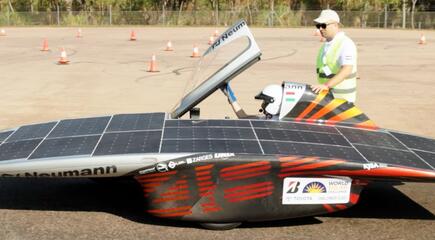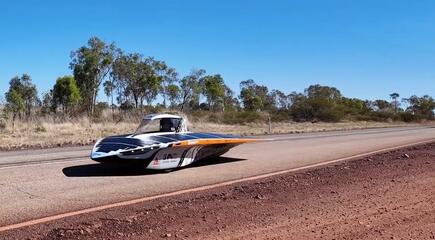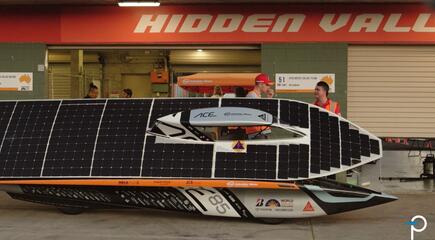Driving a Gas-Powered Van in the Middle of a Solar Car Race
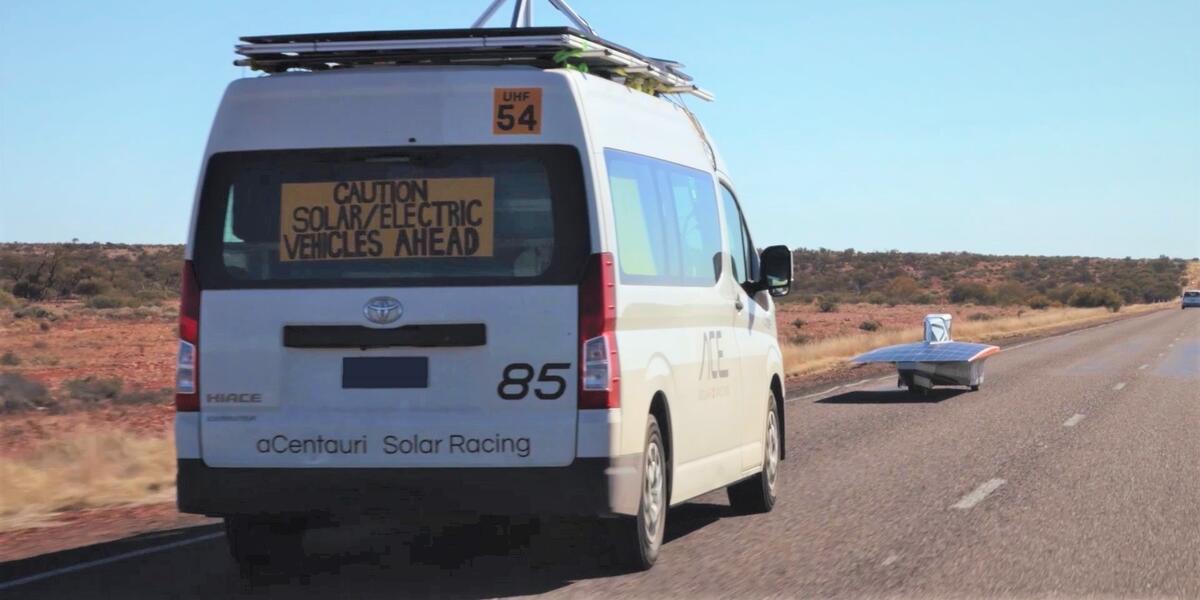
By Trevor Hiatt
In 2023, while chasing solar-powered cars across the Australian Outback during the Bridgestone World Solar Challenge (BWSC), I found myself behind the wheel of a petrol-powered van. The irony wasn’t lost on anyone. At one checkpoint, a local asked, “Why are you driving a petrol car in a solar challenge?” It was a fair question—and one I’d asked myself many times before the event.
I had done my homework. I wanted to rent an electric vehicle (EV) for the journey from Darwin to Adelaide. I wanted to do better for the environment. But the reality of long-distance EV travel in remote Australia is more complicated than it seems.
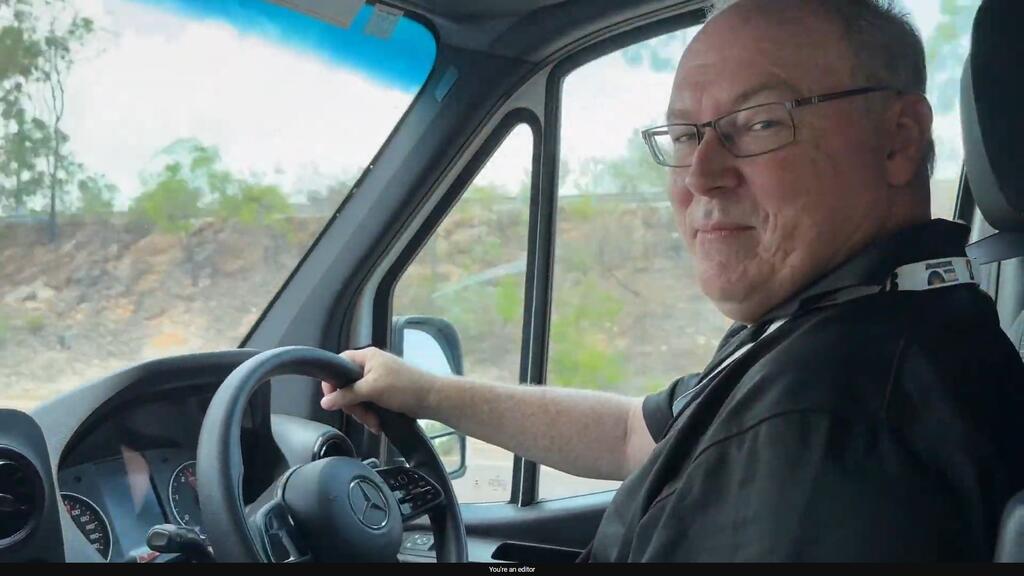
Is It Even Possible to Drive an EV from Darwin to Adelaide?
Around Australia’s coastal metro areas, EV infrastructure is growing rapidly. Cities like Sydney, Melbourne, and Brisbane now boast robust networks of Level 2 (L2) and Level 3 (DC fast) chargers. But once you leave the coast and head into the Outback, things get sparse—fast.
I turned to PlugShare, the go-to map for EV drivers. Along the #BWSC route on the Stuart Highway, there are charging stations—but most are Level 1 (L1), located at caravan parks or roadhouses. These are fine for overnight stays, but painfully slow. Charging a modern EV from empty to full on L1 can take over 24 hours.
Beyond PlugShare, I pored over blogs from Australian EV enthusiasts who’ve mapped out remote charging options. Some of their discoveries didn’t appear on my PlugShare map, possibly due to regional data limitations or user-generated content not syncing globally.

But here’s the thing: if I can’t confirm a charger exists from my desk in the U.S., I can’t plan around it. I have to rely only on what’s known and verified—or risk being stranded in the desert.
The EV Rental Dilemma
Even if you find chargers, can you rent an EV in Darwin? Yes—but with caveats. Platforms like Turo and Evee offer EV rentals, including Tesla and BYD, but availability is limited. More importantly, most rental companies don’t allow one-way trips to Adelaide. That’s a dealbreaker for BWSC support crews who need to follow the race from start to finish.
Range is another issue. No full-EV currently available for rent in Darwin can make the journey in one go. Range-extender hybrids like the BMW i3 REx or plug-in hybrids might offer a compromise, but they still rely on petrol—albeit less than a full internal combustion engine (ICE) vehicle.
Chasing Solar Cars with an EV: A Losing Game
Let’s do the math. Suppose you’re driving a Tesla Model 3 with a 75 kWh battery. On L1 charging, you might get 2 kWh per hour. That’s 37.5 hours to fully charge. Even if you only need half a charge to reach the next checkpoint, you’re still looking at 18+ hours of charging.
Now consider this: between Alice Springs and Port Augusta—a stretch of over 1,200 km—there were no fast chargers in 2023. That’s roughly 13 hours of driving, not accounting for headwinds, which are notorious in places like Coober Pedy.
Those headwinds can kill your EV range.
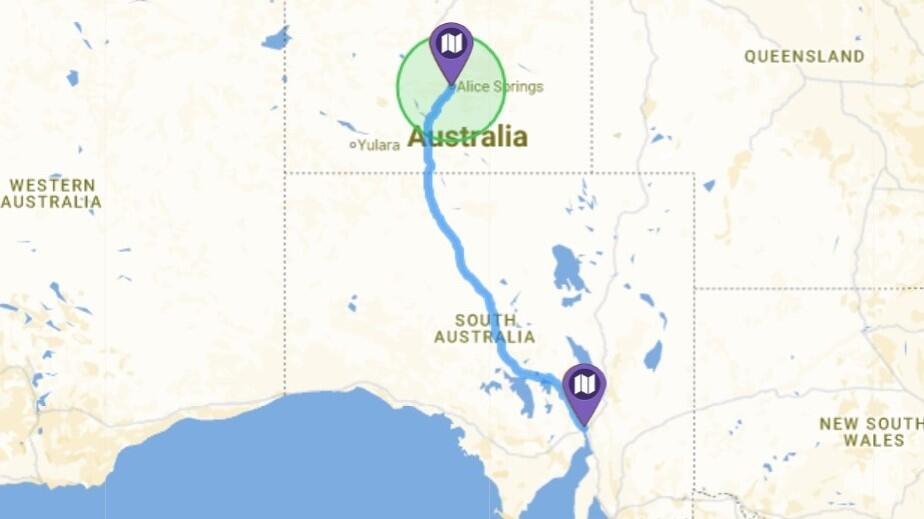
Meanwhile, solar cars don’t stop. They’re designed to run all day—at speeds of 90–100 km/h—on sunlight alone. They don’t even use the grid. Their performance is a marvel of engineering: ultra-lightweight bodies, hyper-efficient motors, and solar arrays that sip energy from the sky. Even with a massive battery and access to fast chargers, a regular EV simply can’t keep up. It’s a humbling reminder of how far we still have to go in mainstream EV tech—and how much potential there is to go 100% green.
The Show Must Go On
As part of the media team, our mission is to document the race from start to finish. We can’t afford to be stranded in the Outback while the solar cars disappear over the horizon. That’s why, reluctantly, we chose a petrol van. It wasn’t ideal, but it was reliable.
Progress Since 2023: A Glimmer of Hope
Thankfully, things are changing. Since 2023, Australia has made significant strides in expanding EV infrastructure (1):
- Fast chargers along the Stuart Highway have increased. In 2023, fast charging was limited to major hubs like Darwin, Katherine, and Alice Springs. Today, new ultra-rapid stations have been added in Coober Pedy and Port Augusta, completing the route.
- The RAA Charge network now includes 138 operational sites across South Australia, with 200 kW and 150 kW chargers in key Outback towns.
- The Driving the Nation Fund is supporting 16 fast-charging locations across the Northern Territory, including Katherine, Tennant Creek, and Alice Springs, with the goal of enabling EV travel from Darwin to Adelaide.
- Linked Group Services and NRMA are piloting off-grid fast charging stations powered by solar, batteries, and diesel backup—starting with a prototype in Erldunda, right on the BWSC route.
These efforts are closing the gaps and black spots in Australia’s charging network. But we’re not there yet.
Looking Ahead: High-Speed Charging in the Outback
Australia’s national EV strategy calls for 27,500 new public chargers by 2033—an eight-fold increase. The goal is to make range anxiety a thing of the past—even in the Outback. With fast chargers every 150 km and off-grid solutions in development, the dream of chasing solar cars in an EV may soon become reality.
Until then, we’ll keep asking the hard questions. And maybe next time, when someone asks why we’re driving a petrol van in a solar race, we’ll have a better answer.
This Mr. Green blog is part of our special coverage of the Bridgestone World Solar Challenge 2025 and Team αCentauri’s challenger class solar race car, #85 Silvretta. Silvretta uses a PI InnoSwitch3-AQ IC, which incorporates PI’s PowiGaN gallium-nitride technology, for Silvretta’s auxiliary power supply. Follow #PowiGaNVan on Power Integrations’ official YouTube Channel and LinkedIn Page.


